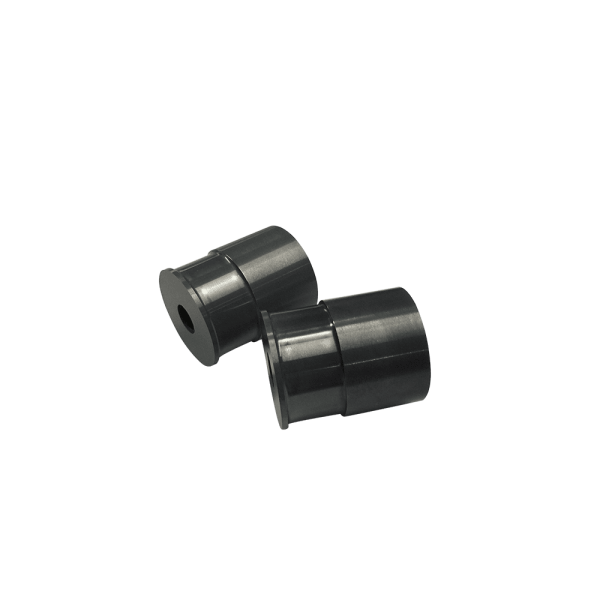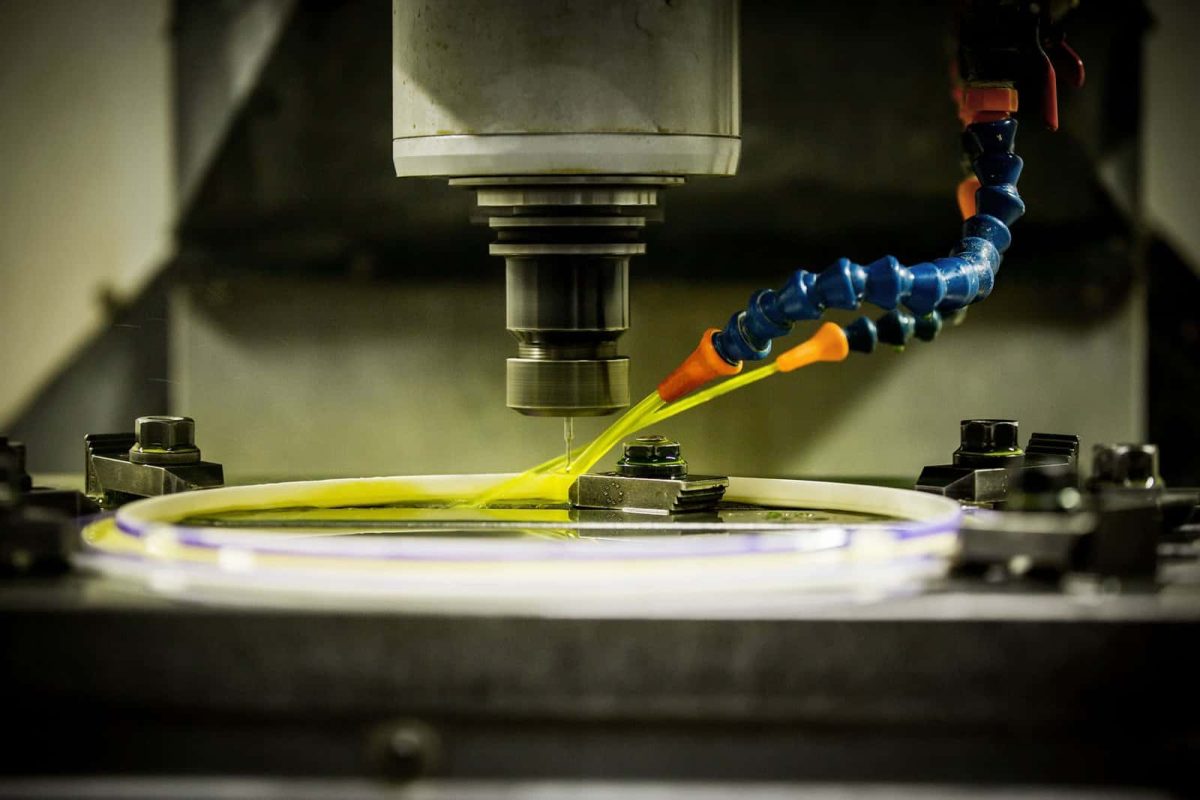Non-oxide ceramics have become some of the most important materials in modern industry. They help us design stronger, lighter, and more durable components, especially in high-performance environments. In this article, we will explore the core features of non-oxide ceramics, explain how they are made, and examine the applications that benefit from their unique properties. We will also look at some challenges faced by manufacturers and discuss the most frequently asked questions about these cutting-edge materials.
Table of Contents
Key Takeaway Table
| Key Point | Summary |
| Definition | Non-oxide ceramics are advanced materials composed of elements other than oxygen combined with metals or non-metals. |
| Common Types | Carbides, nitrides, borides, and silicides, each offering unique properties. |
| Properties | High hardness, thermal stability, electrical conductivity or insulation, and strong chemical resistance. |
| Manufacturing | Often involves sintering under protective atmospheres to prevent oxidation. |
| Main Uses | Aerospace, automotive, electronics, and medical technology, especially in high-temperature or high-stress settings. |
| Challenges | Brittleness, high production costs, and the need for specialized processing equipment. |
Introduction to Non-Oxide Ceramics
Non-oxide ceramics are advanced materials that do not contain oxygen in their chemical structure. Unlike oxide ceramics (which often include oxygen combined with metals), non-oxides focus on elements such as carbon, nitrogen, boron, and silicon joined with metal or other non-metallic atoms. These ceramics feature remarkable mechanical and thermal properties, making them essential in industries that demand high performance under extreme conditions.
Typically, non-oxide ceramics are engineered or synthesized artificially to ensure precise control over their composition and microstructure. Because of this, manufacturers can tailor certain properties—such as hardness, toughness, or conductivity—to fit specific industrial needs. These materials often serve in situations where metals or polymers might fail, especially in high-temperature or corrosive environments. In the next sections, we will delve into the different types of non-oxide ceramics, their properties, and why they matter.
Types of Non-Oxide Ceramics
Non-oxide ceramics can be categorized based on their elemental makeup. Each group boasts its own set of strengths, making them better suited for certain tasks. Below are the four main categories you should know:
Carbides
Carbides combine carbon with metals or semi-metals. One of the most well-known examples is silicon carbide (SiC). Another example often mentioned is tungsten carbide (WC), frequently used in cutting tools and drill bits. These materials are notable for their extremely high hardness, which helps them stand up to abrasive environments. Carbides also possess excellent thermal stability, making them reliable at temperatures where many metals would soften or deform. Because of their hardness, carbides are frequently employed in wear-resistant parts and machining applications.


Nitrides
Nitrides are formed when nitrogen combines with metals or semiconductors. Two common nitrides include silicon nitride (Si₃N₄) and aluminum nitride (AlN). These materials are valued for their outstanding mechanical strength and thermal conductivity. Silicon nitride, for instance, can handle high impact loads and extreme temperatures, making it a favorite in aerospace and automotive engine components. Aluminum nitride, on the other hand, is known for being an effective heat conductor while still acting as an electrical insulator, which is particularly beneficial in electronic packaging.
Borides
Borides incorporate boron with metals or semi-metals, resulting in compounds that feature very high melting points and superior hardness. Examples include titanium diboride (TiB₂) and zirconium diboride (ZrB₂). These materials often find their way into specialized applications that require exceptional wear resistance. Borides are sometimes used in armor plating and thermal management components because they maintain their properties under extreme heat.
Silicides
Silicides involve the chemical combination of silicon with metals such as molybdenum or tungsten. They provide excellent thermal stability and resistance to oxidation when exposed to high-temperature atmospheres, which is crucial in industries dealing with furnaces and reactors. Molybdenum disilicide (MoSi₂), for example, is often used in heating elements because it remains stable at temperatures beyond 1500°C. This kind of performance is especially needed in industrial furnaces and advanced processing equipment.
Properties of Non-Oxide Ceramics
Non-oxide ceramics are preferred in many high-end applications because they possess a range of remarkable properties. Although the exact characteristics can vary between carbides, nitrides, borides, and silicides, most non-oxides share a few common traits:
High Hardness
One key reason for using non-oxide ceramics is their exceptional hardness. Many of these materials, such as boron carbide and silicon carbide, are harder than most metals. This makes them highly resistant to scratching, abrasion, and indentation. As a result, they are often chosen for wear surfaces and cutting tools.
Thermal Stability
Another vital property of non-oxide ceramics is their ability to maintain strength and shape under extremely high temperatures. For instance, silicon carbide can remain stable at temperatures surpassing 2000°C, which would render typical metals useless. This thermal stability allows components to operate safely in industrial furnaces, jet engines, and other intense heat environments.
Electrical Conductivity
The electrical properties of non-oxide ceramics can vary. Some are excellent insulators (like many nitrides), while others (like certain carbides) show semiconducting or conductive behavior. Because of this, non-oxide ceramics can be used in electronic devices, circuit substrates, or even heating elements. Silicon carbide, in particular, is popular for its good thermal conductivity combined with electrical properties that can be adjusted through doping.
Chemical Resistance
Many non-oxide ceramics are also resistant to corrosion in harsh chemical environments. They do not oxidize easily, provided they are used under the right conditions (e.g., vacuum or protective atmospheres). This attribute enables them to remain stable in reactive or high-temperature settings, which is critical for applications like chemical reactors, molten metal handling, and cutting tools for abrasive materials.
Manufacturing Processes for Non-Oxide Ceramics
Manufacturing non-oxide ceramics can be more challenging than working with traditional materials like metals or plastics. In many cases, high temperatures and specialized atmospheres are needed to prevent oxidation or unwanted reactions. Below are the main steps manufacturers often follow to create non-oxide ceramics:
Powder Synthesis
The journey usually begins with powder synthesis, where chemical reactions produce high-purity ceramic powders. For instance, silicon carbide can be synthesized by reacting silicon dioxide (SiO₂) with carbon at elevated temperatures. This part of the process is extremely controlled to ensure the powder meets strict purity and particle-size requirements. Impurities could lead to weaknesses or defects in the final ceramic part.
Shaping and Forming
Once manufacturers have the powder, they shape it into “green” bodies that will later be densified. Various forming methods exist, including:
- Pressing: Compacting the powder into a die to form simple shapes.
- Extrusion: Forcing the powder-binder mix through a shaped die to create rods or tubes.
- Injection Molding: Using a binder to create more intricate forms.
- Slip Casting: Pouring a slurry into a mold for more complex shapes.
After this stage, the shaped part is often referred to as a green ceramic, which is not yet fully dense or hardened.
Sintering Under Protective Atmospheres
Sintering is where the shaped powder is heated to a temperature just below its melting point. During sintering, the particles fuse together, increasing the component’s density, strength, and hardness. Non-oxide ceramics often demand protective atmospheres (like argon, nitrogen, or even vacuum conditions) because exposure to oxygen at high temperatures can cause oxidation or other unwanted reactions.
Post-Processing
In some cases, additional post-processing steps are necessary. These might include machining, polishing, or applying special coatings. Because non-oxide ceramics are extremely hard, machining them can be tricky and often involves diamond tooling. Manufacturers carefully plan this stage to minimize cost and reduce the risk of inducing cracks.

Applications of Non-Oxide Ceramics
Non-oxide ceramics find use in a vast range of industries that require robust mechanical properties, high thermal stability, and excellent chemical resistance. Let us take a closer look at some of the main fields:
Aerospace
Aerospace components often endure extreme conditions, including rapid temperature swings and high mechanical stresses. Non-oxide ceramics like silicon carbide and silicon nitride are ideal for these scenarios because they do not easily warp or degrade under intense heat and pressure. Engine components, turbine blades, and heat shields are some examples of where non-oxide ceramics can shine.
Automotive
In the automotive industry, these materials appear in engine parts, brake systems, and exhaust components. The hardness and wear resistance of carbides make them suitable for high-contact, high-friction surfaces, while nitrides can handle corrosive or high-temperature exhaust gases. As vehicles evolve to meet efficiency and performance demands, the lightweight and durable nature of non-oxide ceramics becomes increasingly valuable.
Electronics
Non-oxide ceramics are also vital in the electronics sector. Silicon carbide can act as a semiconductor for power electronics, handling high voltages and temperatures beyond the capabilities of standard silicon-based devices. Meanwhile, materials like aluminum nitride serve as thermal management solutions, efficiently transferring heat away from sensitive electronic components. This keeps circuit boards from overheating and ensures long-term reliability.
Medical Technology
Although oxide ceramics often see more use in medical implants, certain non-oxide ceramics can also find their place in the medical field. For instance, silicon nitride has been studied for spinal implants because of its strength and potential biocompatibility. Research continues to explore how these materials can improve dental and orthopedic applications as well.
Other Industrial Uses
Beyond these major industries, non-oxide ceramics also appear in cutting tools, abrasives, chemical processing equipment, and nuclear technology. Their ability to withstand harsh environments with minimal wear makes them a top choice wherever longevity and reliability are crucial.



Advantages of Non-Oxide Ceramics
Non-oxide ceramics offer several advantages over oxide ceramics, metals, and polymer-based materials. Let us outline a few of the most notable benefits:
- Superior Mechanical Properties: Their high hardness and wear resistance allow them to maintain structural integrity under intense conditions. This is invaluable in cutting tools and protective armor.
- High Thermal Shock Resistance: Non-oxide ceramics can tolerate abrupt temperature changes without fracturing. This property is especially helpful in aerospace propulsion or automotive exhaust systems.
- Lightweight Nature: Many non-oxide ceramics have lower densities compared to metals like steel. This helps reduce the overall weight of components in aerospace and automotive applications.
- Flexible Electrical Properties: Depending on the compound and doping, non-oxide ceramics can either conduct or insulate electricity. This makes them adaptable for different electronic and industrial uses.
These advantages explain why non-oxide ceramics continue to gain popularity in innovative, high-tech sectors. Their extraordinary combination of properties often justifies the extra cost and effort needed for manufacturing.
Challenges in the Use of Non-Oxide Ceramics
Despite their clear benefits, non-oxide ceramics also come with a set of challenges that manufacturers and end-users must address.
Higher Production Costs
The production process for non-oxide ceramics can be complex and energy-intensive. High sintering temperatures, protective atmospheres, and specialized equipment all contribute to elevated costs. Compared to traditional materials like steel or aluminum, non-oxides can be significantly more expensive to produce in large volumes.
Processing Difficulties
Machining and finishing non-oxide ceramics pose difficulties because of their extreme hardness. While this hardness is desirable in final products, it makes shaping or drilling them more time-consuming and costly. Manufacturers often rely on diamond tooling or other advanced methods to get the correct shape and surface finish. Each step has to be carefully monitored to prevent micro-cracks or internal stresses that could weaken the part.
Brittleness and Fracture
Many ceramics, including non-oxides, are brittle. While they can handle compressive forces very well, they may fail when subjected to tensile or shock loads. Engineers must design components carefully to minimize stress concentrations that could lead to crack initiation. Solutions may include composite structures or functionally graded materials that combine the benefits of ceramics with metals or polymers.
Quality Control
Maintaining consistent quality can be challenging. Even slight variations in powder purity, particle size, or sintering temperatures can lead to defects. In extreme cases, these defects can reduce performance and lifespan in critical applications, such as aerospace components. This means that rigorous testing and inspection are necessary to ensure the final parts meet stringent industry standards.
People Also Ask (FAQ)
- What are non-oxide ceramics used for?
Non-oxide ceramics are used in cutting tools, abrasives, wear-resistant components, high-temperature insulators, and structural materials. They are especially valuable in the aerospace and automotive sectors, where materials must endure extreme mechanical and thermal conditions. - How do non-oxide ceramics compare to oxide ceramics?
Non-oxide ceramics typically have higher hardness and superior thermal stability than oxide ceramics. However, they may have lower toughness and can be more challenging to process. Their performance in harsh or high-temperature settings often makes them the preferred choice over many oxide ceramics. - What are some examples of non-oxide ceramics?
Common examples include silicon carbide (SiC), silicon nitride (Si₃N₄), titanium carbide (TiC), boron carbide (B₄C), and aluminum nitride (AlN). Each one offers unique properties that can be suited to specific applications, such as thermal conductivity, hardness, or wear resistance. - Are non-oxide ceramics environmentally friendly?
In many cases, non-oxide ceramics are considered environmentally friendly due to their durability and long service life. They do not degrade quickly and can handle high temperatures and corrosion. However, the production process can be energy-intensive, which needs to be factored into environmental assessments. - What challenges do manufacturers face with non-oxide ceramics?
Major challenges include high production costs and difficulties achieving uniform quality during manufacturing. The need for specialized processing environments—like vacuum or inert atmospheres—to prevent oxidation further adds to the overall complexity and cost. Moreover, the brittleness of some non-oxide ceramics can present design and usage limitations.
Conclusion
Non-oxide ceramics stand out as essential materials in the modern world. Their incredible hardness, heat resistance, and chemical stability open the door for advanced solutions in aerospace, automotive, electronics, and many other sectors. These materials excel where metals or oxide ceramics might fall short. The variety of non-oxide options—carbides, nitrides, borides, and silicides—ensures that manufacturers can pick the ideal properties for each unique application.
Yet, these benefits come with significant challenges. High production costs, specialized sintering atmospheres, and brittleness all require careful planning. Engineers and technicians must weigh these factors against the improvements in performance, reliability, and longevity that non-oxide ceramics can deliver. In many cases, the return on investment is worthwhile, especially for critical systems that function at extreme temperatures or under high mechanical stress.
As research progresses, new methods for producing and shaping non-oxide ceramics continue to evolve. Scientists are developing novel composites and graded materials that reduce brittleness while retaining the valuable properties of ceramics. In addition, improved manufacturing techniques are helping to reduce costs, making non-oxide ceramics more accessible for a range of industries.
Whether you work in aerospace engine design, electronic packaging, or advanced manufacturing, non-oxide ceramics deserve a closer look. Their durability, lightweight structure, and high-temperature performance can offer tangible gains in efficiency and product lifespan. By selecting the right type of non-oxide ceramic for the job—and taking steps to account for brittleness and production complexities—you can unlock a new level of performance and resilience in your projects.
Ready to Transform Your Engineering Solutions?
No industrial challenge is too complex for Eshino. From precision ceramic rods and advanced bushings to customized nozzles and other high-performance components, we engineer solutions that combine exceptional durability, thermal resistance, and precision to meet your specific needs. Whatever your industry demands, Eshino delivers tailored expertise you can trust.

